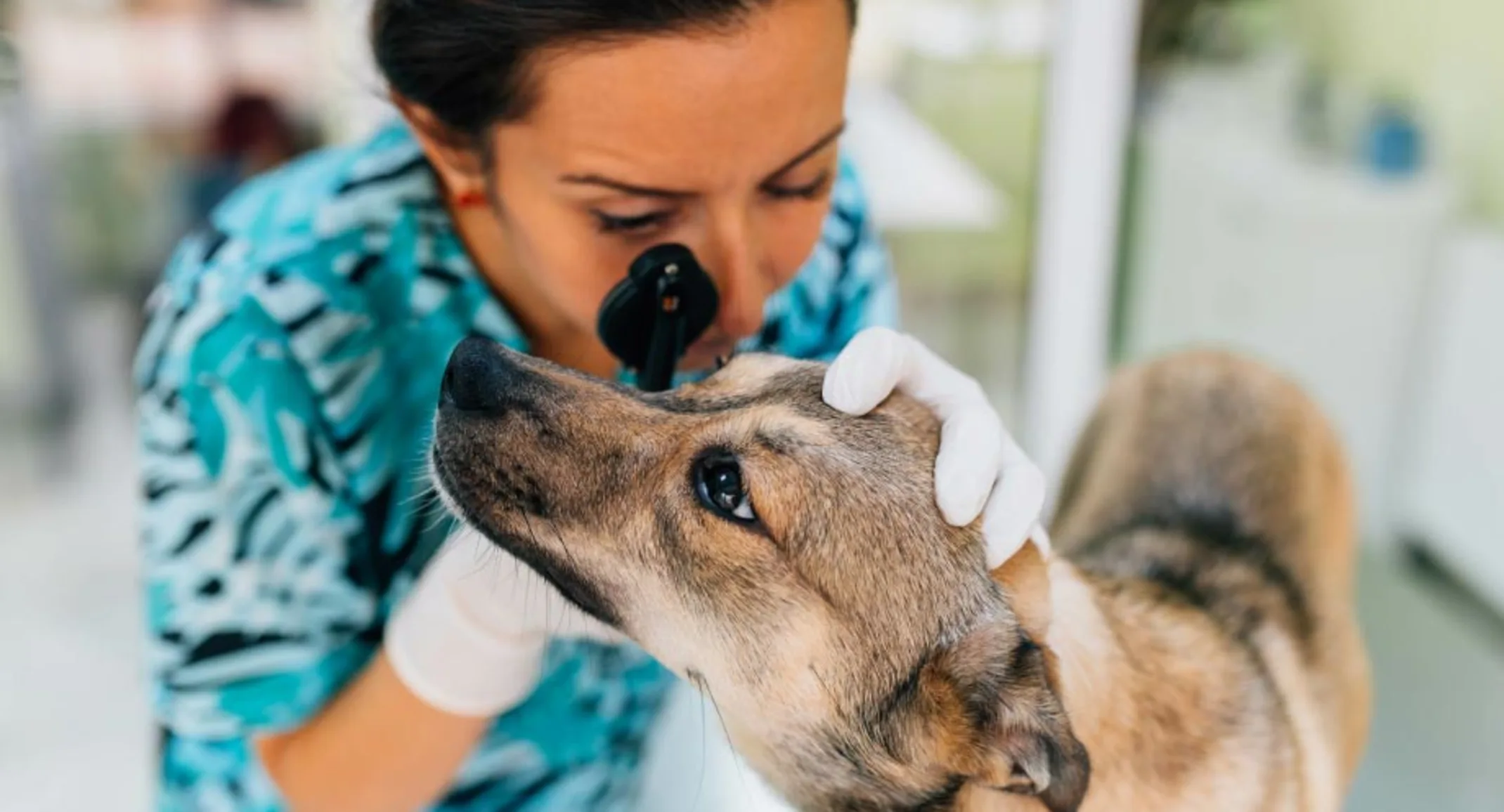EXAMINE YOUR PET FOR WARNING SIGNS OF EYE PROBLEMS
Whenever a pet shows any signs of discomfort near or observable changes to their eyes, the animal needs to be examined. Look for warning indications in your dog:
#1. Does Your Pet Have Eye Pain?
Signs:
Squinting or closing the eye
Excessive tearing
Light sensitivity
Tenderness to the touch
Protruding nictitating membrane
Behavioral changes, for example:
Loss of appetite
Whining
Pawing or rubbing at the eye
#2. Have Your Pet’s Eyes Changed in Appearance?
Noticeable differences in the animal’s eyes may indicate a problem.
Physical changes in:
Size
Shape
Color
Your cat or dog may be experiencing a problem caused by an inner eye disease. Signs of these diseases are indicated by changes in eye pressure and an abnormal firmness or swelling of the eyeball. These symptoms could be related to diseases such as:
Pupils:
Are they equal in size?
When light is shined directly into the eye, do they contract?
Are they dilated?
Eye discharge:
Watery
Thick green or yellow
Mucoid
Is there any indication of pain?
Loss of clarity or transparency, with the cornea appearing:
Smoky
Cloudy
Blue-gray
Entirely opaque
Is there any sign of associated pain?
#3. Is the Surface of Your Pet’s Eyeball Smooth?
When examining the surface of the eyeball, you probably will not be able to look at the eye beneath the skin and eyelids and may need to take your dor or cat to a veterinarian immediately. When examining the surface of the eyeball, the veterinarian will look for indications of:
Corneal abrasions
Ulcers
#4. Do Your Pet’s Eyes Appear Unusually Sunken or Bulgy?
Glaucoma
Uveitis
This is an examination that is usually and more safely conducted by your veterinarian. Please do not attempt to assess your pet’s eyes, as the eye and surrounding tissue is quite delicate.
The veterinarian may begin this examination by closing the pet’s eyelids and gently pressing on the surface of the eye. This helps them determine if there is a difference between the feel of the eyes; for example, if one feels harder or softer than the other. Additionally, this will provide information to let them know if the eye is tender to the touch as the animal will react with a show of pain. Knowing there is pain may help to point to the cause of the problem.
If the animal’s eye is bulging, it may be the start of an abscess, hematoma, or tumor. This part of the examination will also check for:
Swelling of the face around the eye
Tenderness to the globe when lightly pressed with a finger
Signs the animal has difficulty opening and closing their mouth
Evidence of a head injury.
#5. Is Your Pet Losing Vision?
Similar to a vision test for humans, when checking a dog or cat for vision loss, one eye will be covered while the other is not. Move as if you are going to touch the uncovered eye, and if the animal can see, it will blink as the finger gets closer to its eye.
TAKE YOUR PET TO YOUR VETERINARIAN
If your pet is experiencing any of the above symptoms, get it to your veterinarian right away. The basic steps of an eye examination help the veterinarian uncover initial information. Based upon these findings, the veterinarian will be able to identify the next step to take toward determining a final diagnosis of the your pet’s eye condition.


